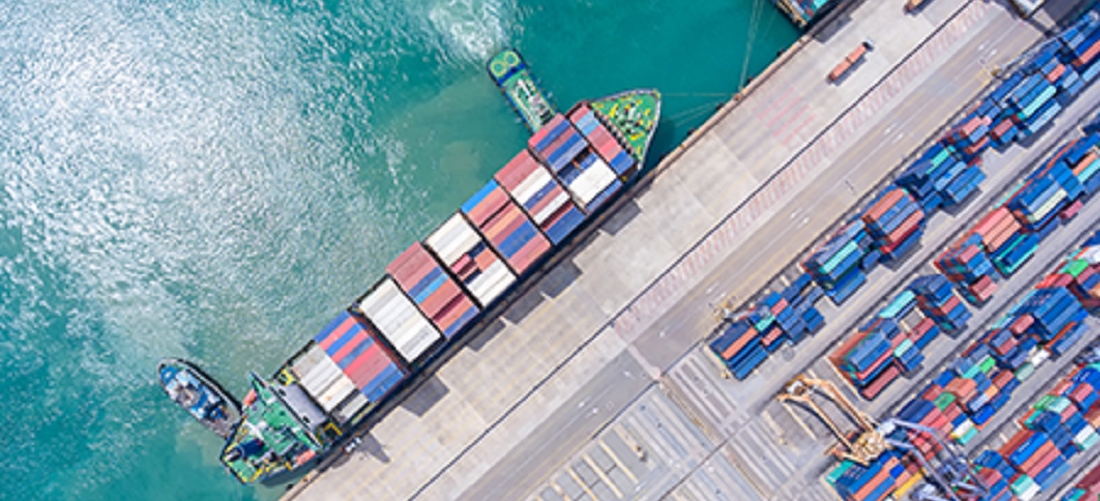
Brazilian containerized cargo exports decrease in 2022; drop in wood exports might explain trend
Dec, 30, 2022 Posted by Gabriel MalheirosWeek 202252
Data recently released by Datamar’s Business Intelligence team on Brazilian container movement show that, in November, containerized cargo exports decreased by 7.8% compared to the same month of 2021. Year-to-date, compared to the first eleven months of last year, the drop is 3.4%, as shown below:
Brazilian containerized cargo exports | Jan-Nov 2019 to Jan-Nov 2022 | TEU
Source: DataLiner (click here to request a demo)
Several products participated in the November volume drop. Exports of wood (-39.4%), fruits (-26.3%), and plastics (-18.6%) are among the most affected containerized cargo.
All things point to wood shipments continuing to drop for environmental reasons in 2023. This is because, in November, at the 19th summit of the Convention on International Trade in Endangered Species of Wild Fauna and Flora (CITES), held in Panama, it was decided that exports of ipe and cumaru (Brazilian teak) wood require licenses attesting that they were extracted legally and with minimal environmental impact. The measures will go into effect in 90 days.
A cubic meter of ipe wood is currently worth BRL 15,000 in international markets. According to a March report by the US NGO Forest Trends, excessive purchases by foreign customers were found to be wiping out the species.
In addition, on December 6, 2022, European Parliament Members and member-states reached an agreement to ban the entry of products that come from deforested or degraded land. The list includes products such as wood, cocoa, coffee, soy, palm oil, beef, rubber, and processed products such as leather, chocolate, furniture, and paper, among others.
The resolution increases the pressure on Brazilian exports. The text specified that the prohibition contemplates not only the deforestation of primary forests but all types of forests. Importing companies will be responsible for their supply chains and must prove traceability through crop geolocation data.
Please find below the record of Brazilian wood exports over the past years. The data is from DataLiner:
Brazil’s wood exports | Jan 2019 – Nov 2022 | TEUs
Source: DataLiner (click here to request a demo)
It is also worth noting that, in June 2022, the Brazilian and US governments formed a partnership to combat the illegal export of timber from the Amazon and other environmental crimes, with support from the United States, especially in the intelligence field. This is because the unlawful export of wood is seen as one of the starting points for deforestation in the Amazon. Hardwoods, with commercial appeal, are the first to be removed for sale with forged documents, which opens the way for the second stage of removal of less marketable woods until the area turns into a pasture.
Imports
Brazilian imports of containerized products grew 6.3% in November compared to the same month in 2021. Notwithstanding, year-to-date (January to November) imports were 2.57% lower compared to the first eleven months of 202. See more below:
Brazilian containerized cargo imports | Jan-Nov 2019 to Jan-Nov 2022 | TEU
Source: DataLiner (click here to request a demo)
Where do all of the above leave freight rates?
With decreasing cargo volumes, maritime freight to the East Coast of South America has been falling week after week, according to the Platts Americas Container Freight report by S&P Global, released on December 26.
The PCR31, which refers to freight between North Asia and South America’s east coast, saw a decrease of 8.3% in the week. As the market is historically calm during the holiday weeks, most sources expect little change in the coming days.
In South America, Platts-assessed rates for East Coast imports from the Far East fell $100 to land at $1,100/FEU. Conversely, exports from ECSA held firm at $1,300/FEU.
Sources in South America said the flip is atypical and attribute it to low import demand against a stronger-than-expected commodity export rush. A freight forwarder in Brazil said carriers are increasing blank sailings on imports but that the tightened capacity has not yet influenced rates. Overall, market participants expect the bearish market to continue.
“I’m not optimistic,” said a market analyst. “It will be interesting. There are glimmers of hope in the economy — but retail holiday spending will be the leading indication [on where the market is headed].”
With information from UOL, Exame, CNN, and O Estado de S. Paulo.
-
Meat
Jun, 19, 2024
0
Brazilian pork exports in June 2024 exceed 50% of total shipped same month last year
-
Meat
Jul, 31, 2023
0
Poultry: challenges and expectations of a new record in exports
-
Grains
Dec, 12, 2019
0
High priced domestic crop will make JBS import corn
-
Steel and Aluminium
Jun, 07, 2024
0
Argentina suspends surcharge on Brazilian stainless steel cutlery

